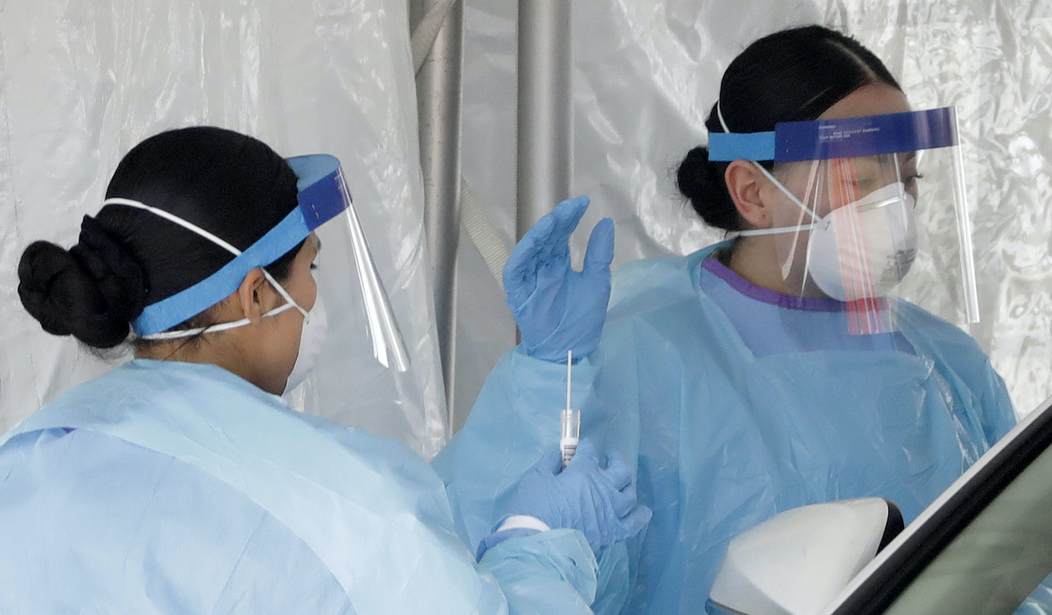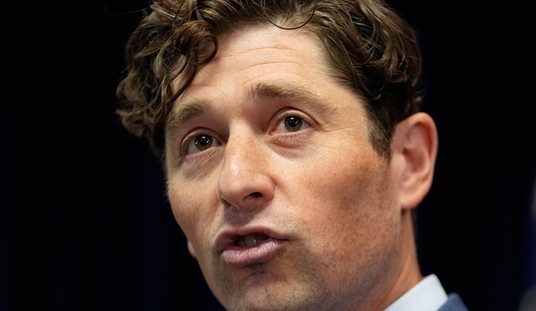In the noise about "the coronavirus pandemic," much is lost. So let us sort through the clamor to find the nuggets that will allow us to make sensible choices in our response to the worst societal disaster in recent memory.
1. "Coronavirus"
The word "coronavirus" just rolls off the tongue as if it were an indication of the speaker's intelligence. But SARS CoV-2 (COVID-19) is actually just one of a family of coronaviruses. All of us are familiar with the common cold. It's a coronavirus that makes us miserable for a week, unless we treat it and cut that down to seven days. Two other coronaviruses are quite nasty, MERS and SARS, but they didn't shut society down the way our reaction to SARS CoV-2 has done.
2. Respiratory Virus
It's essential to understand that coronaviruses are respiratory pathogens. That means that while they can be passed via contact, most of the time we get them from droplets or aerosols from an infected person. Droplets come from coughing and sneezing, while aerosols are created every time you breathe. Droplets are large enough that gravity makes them fall to the ground quickly, but aerosols waft about for longer.
This has major importance for disease transmission. Coughs and sneezes that are properly muffled aren't likely to infect anyone, because their droplets will be captured. If you're in an area where there's good airflow, aerosols will dissipate, leaving little chance that anyone will be infected. That's why the state of Florida is unable to document a single case of COVID-19 being transmitted outdoors. Beaches, parks, and golf courses are as safe as any place can be, even without social distancing.
The flip side of this is that closed spaces with poor ventilation are disease incubators with eighteen times the chance of infecting new victims. They are the source of virtually every outbreak. The original Kirkland, Washington outbreak was in a nursing home with closed spaces and recirculating central air conditioning. This is remarkably similar to the Diamond Princess and Lombardy (Italy) epidemics. Those should have been enough to recommend that New York City residents needed to leave their aging rent-controlled apartments and go outside. Instead, Governor Cuomo demanded that everyone hole up in virus incubators. He then demanded that nursing homes accept COVID-19 positive patients. New York's high mortality rate was predictable.
Recommended
3. Social distancing
Because COVID-19 is a respiratory virus, we are being told to stay beyond the range of most coughs. But early tracing studies show that such spacing is of little value. In an early incident in Guangzhou, China, multiple victims seated further than six feet from the super spreader got sick from virus spread by a restaurant's ordinary air conditioning system. Ninety minutes of continuous exposure was almost certainly a factor.
Casual exposure within the six-foot limit is probably a good thing, not something to avoid. Studies with H1N1 flu demonstrate that low-level exposure to virus is the way that our immune systems are stimulated to create resistance to bugs without us getting seriously ill. Social distancing reduces exposure, preventing this antibody response. Sustained exposure to an ill person is what causes major illness, because they are shedding larger amounts of virus. This can be enough to overwhelm your immune system.
4. Masks
Unless you are sick, or caring for the sick, masks are worthless. They may even cause harm. If you don't have the bug, your mask won't protect anyone else, because there's nothing to protect them from.
If you are sick, a mask may reduce the exposure to those around you, but if you sneeze or cough, a surgical mask won't keep the virus particles contained. Even an N95 will probably be lifted away from your face briefly, allowing virus to escape. The best thing if you are sick is to avoid the public (self-quarantine).
Surgical masks like I wore for 36 years were never intended to protect the user, but rather to protect patients with open wounds from being infected by aerosols from the surgical team. N95 masks are useful for caregivers who are in an infective environment because they are sealed so that 95 percent of all viruses are excluded.
5. Gloves
Unless you know how to properly remove gloves, they are worse than useless. Improperly removed gloves will transfer whatever is on them to the hands of the person removing them. That's the same situation that would result from not wearing them at all. Only use gloves in situations where you would wear them anyway even if there was no pandemic. Hand washing and hand sanitizer are more than effective.
6. Ultraviolet light
If you go outside, you are exposed to UVA and UVB from the sun. It doesn't matter if it's cloudy. You can still get a sunburn. This UV radiation destroys the chemistry of viruses and bacteria, sterilizing the environment. And it happens FAST. That's one reason that being outside is so safe.
An even shorter wavelength of light, UVC, which is completely safe for your skin and eyes, is now being used for sterilization of indoor spaces. It has been demonstrated to kill H1N1 flu and coronaviruses.
Ordinary UV has been used for years to sterilize meats and purify air in air conditioning systems. A combination of UV in the air conditioner and UVC in public rooms would make indoor facilities such as restaurants almost as safe as being outdoors.
7. Herd Immunity
It is now fashionable to speak of us being safe when there is herd immunity. Vaccines are touted as the way to achieve this. Of course, the earliest vaccines are at least eight months or more away. So we are told to avoid people like the plague and suffer through unspeakable economic hardship until then. Of course, if you were looking closely during #3 above, you'd already know that casual contact with infected individuals is the primary way that herd immunity is developed. Since somewhere between 60 percent and 90 percent of the population has to become immune for a disease to be stopped, so we have a long way to go. Even in New York City, no more than 20 percent have been exposed enough to get immunity.
8. Mortality
The original data on COVID-19 was sketchy at best. It looked like it might be a horribly contagious new Ebola, where if you looked at a sick person, you died. We now know that the original estimates were incredibly awful in their methodology, and couldn't even replicate their own numbers. But that fear was sold to the world.
We also know that the doomsayers were completely wrong, and COVID-19 is not the Black Death. (Governor Cuomo to the contrary notwithstanding.) If you are under age 60, and you don't have a major illness already, you are almost certain to recover, even if you get a bad case. We also know that if you get the hydroxychloroquine/azithromycin/zinc cocktail early, you won't get as sick and you'll recover sooner. Get back to school or work!
If you are already sick with something else, and are over age 60, then there is a good reason to avoid exposure. You are in the only large high-risk group in the general population. If you start to feel sick, seek immediate attention. Meds can help, but only if given in time. Everyone else should be back at work now, not later. All jobs are essential.
9. Collateral Damage
The damage from panic and economic disaster is hard to overstate. Everyone who is simply trying to survive through this ill-advised shutdown is at risk. Suicide is the obvious risk mentioned by the president. Hotlines have been busy.
In the 2008 economic downturn, which is nothing compared with today, there were a half million excess cancer deaths. Today, roughly half of all cancer patients are not getting their chemotherapy. Screening colonoscopies and mammograms are not happening because they are "non-emergency." And there is a 40 percent drop in ER visits for acute stroke and heart attack.
These are just a handful of the obvious collateral medical costs visited on us by well-meaning but horribly mis-led political leaders.
Anyone with time and a search engine can find many more related facts. COVID-19 is killing people, but primarily the elderly and infirm. Each life lost is a tragedy to family, but when examined in a larger perspective, most of the dead did not have a lot of time left. In Italy, the average age at death was 82, with a life expectancy of only seven months longer without the virus. The situation in NYC isn't all that different. Those who are about to die anyway are just waiting for a date and a cause of death for the certificate. I know that sounds cold, but in public policy, we can't let good policy for most people be overruled by sob stories and sound bites.
Yes, there are a handful of other deaths that make the news. But in the bigger picture, COVID-19 isn't a lot worse than last year's celebrated disease. Or next year's. We lose on average 8,000 Americans every day from all causes. COVID-19 isn't close to being as big a problem as heart disease or other chronic illnesses. It's time to take our finger off the PAUSE button and see what can be rescued of America before we destroy it in the effort to be perfectly "safe."
Dr. Ted Noel blogs and vlogs on multiple subjects related to medicine, economics, and freedom. Much of his work can be found under the name DoctorTed at Facebook, YouTube, and other sites.

























Join the conversation as a VIP Member